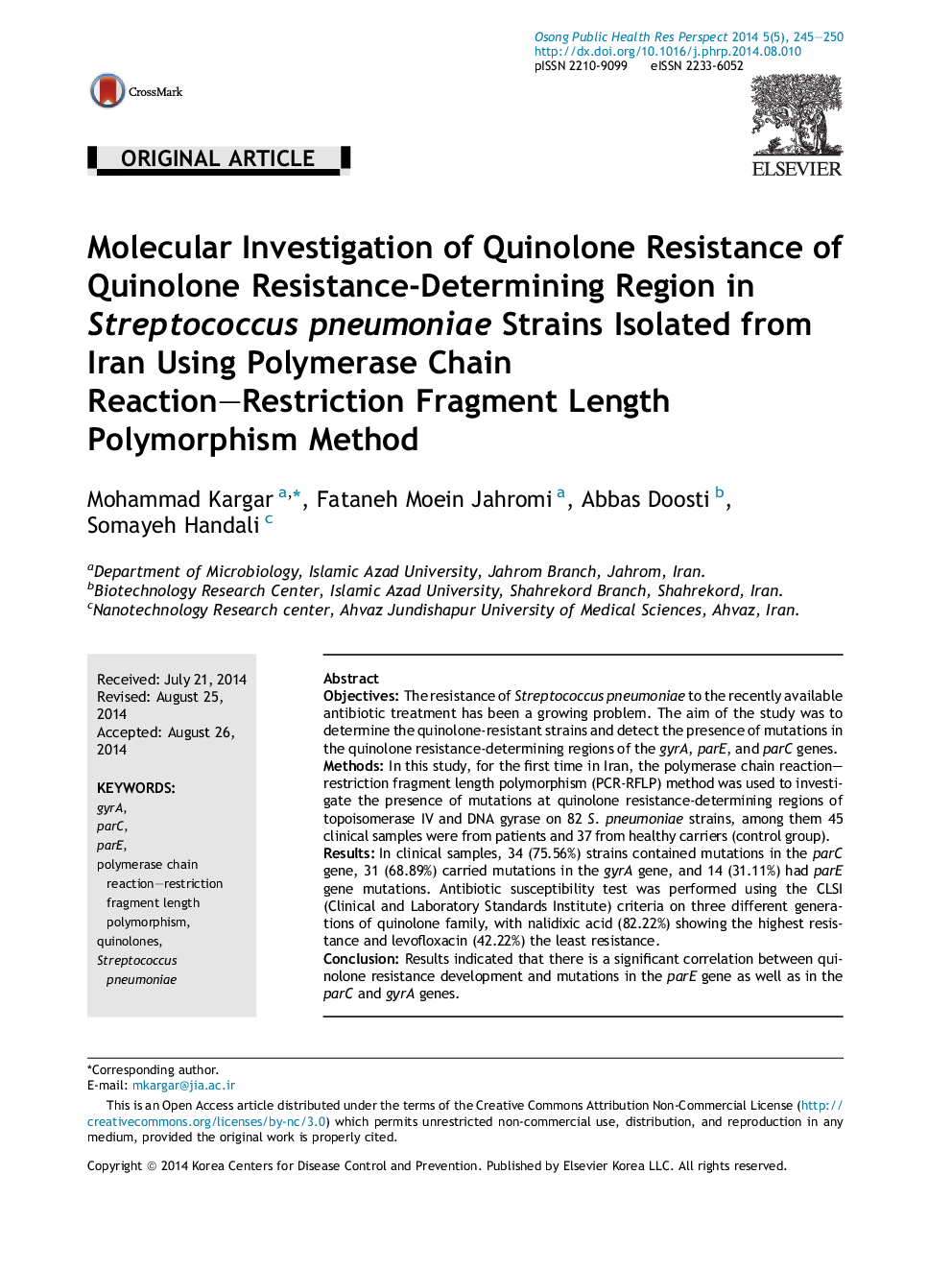| Article ID | Journal | Published Year | Pages | File Type |
|---|---|---|---|---|
| 4201936 | Osong Public Health and Research Perspectives | 2014 | 6 Pages |
ObjectivesThe resistance of Streptococcus pneumoniae to the recently available antibiotic treatment has been a growing problem. The aim of the study was to determine the quinolone-resistant strains and detect the presence of mutations in the quinolone resistance-determining regions of the gyrA, parE, and parC genes.MethodsIn this study, for the first time in Iran, the polymerase chain reaction–restriction fragment length polymorphism (PCR-RFLP) method was used to investigate the presence of mutations at quinolone resistance-determining regions of topoisomerase IV and DNA gyrase on 82 S. pneumoniae strains, among them 45 clinical samples were from patients and 37 from healthy carriers (control group).ResultsIn clinical samples, 34 (75.56%) strains contained mutations in the parC gene, 31 (68.89%) carried mutations in the gyrA gene, and 14 (31.11%) had parE gene mutations. Antibiotic susceptibility test was performed using the CLSI (Clinical and Laboratory Standards Institute) criteria on three different generations of quinolone family, with nalidixic acid (82.22%) showing the highest resistance and levofloxacin (42.22%) the least resistance.ConclusionResults indicated that there is a significant correlation between quinolone resistance development and mutations in the parE gene as well as in the parC and gyrA genes.
